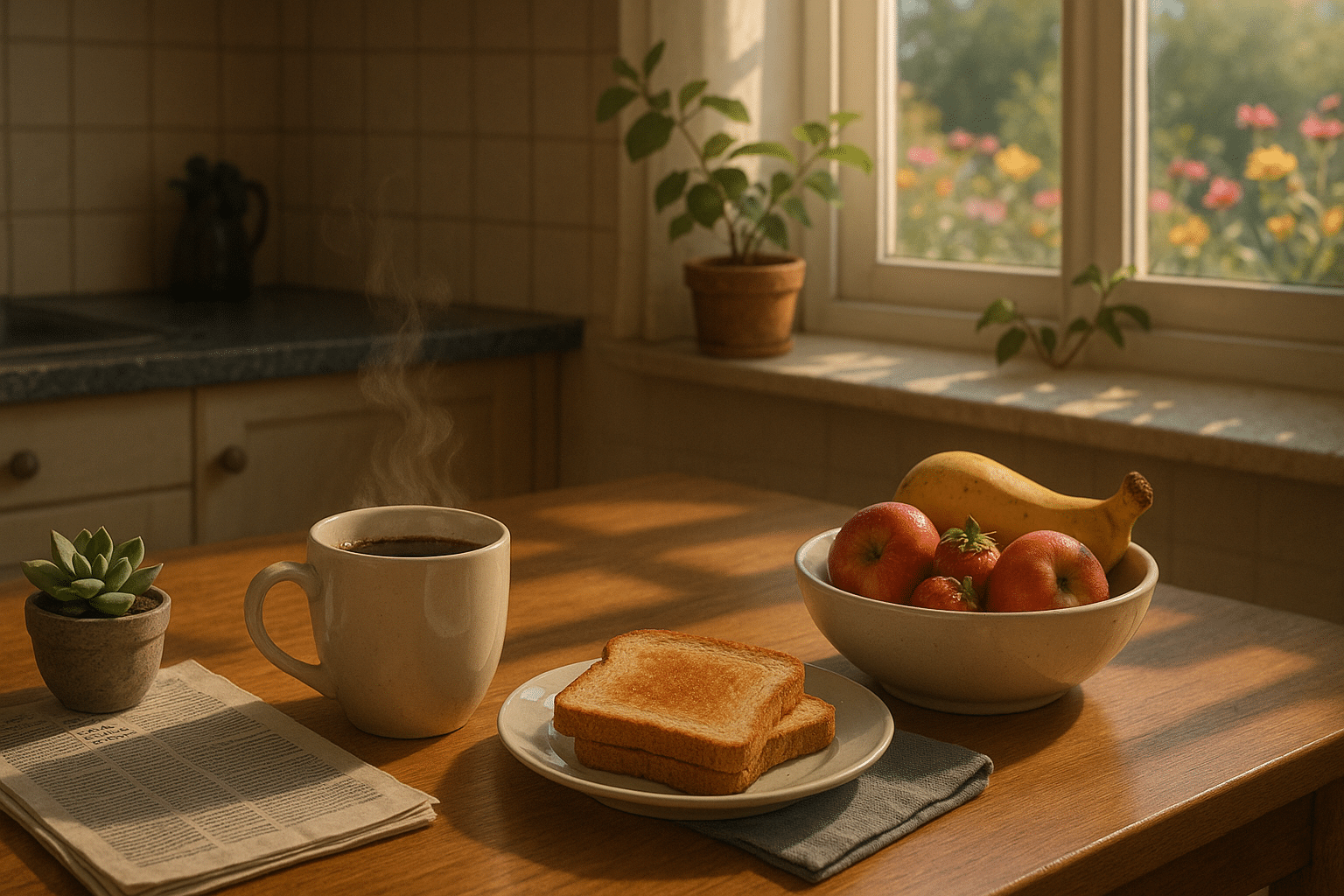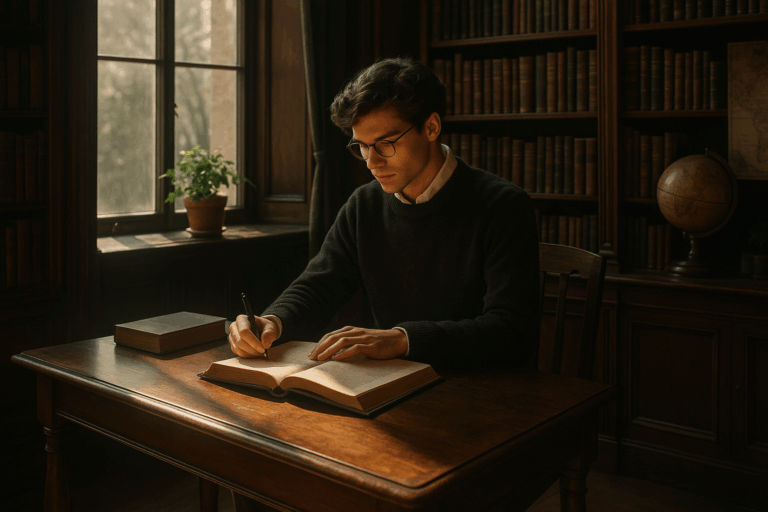Have you ever paused to ponder on the artistry embedded in everyday scenes? Those seemingly ordinary moments that we casually pass by, without a second thought? Transform Mundane Moments into Masterpieces: Explore the Artistry of Everyday Scenes is a journey that will help you discern the magic within the mundane, opening up a world of visual narratives waiting to be discovered.🔎
In the realm of artistry, anything and everything holds the potential to metamorphose into a masterpiece. From the morning sunlight seeping through your window to the steaming cup of coffee perched on your desk, every scene possesses a distinct charm, a story of its own. With the right perspective, a mundane moment can become a canvas, awaiting the creative strokes of your imagination. This transformation, however, requires a well-trained eye, an understanding of various art techniques, and the ability to infuse life into otherwise inanimate scenes.🎨
Artistic Perception – The Game Changer
Our voyage into the artistry of everyday scenes begins with the cultivation of an artistic perception. This is not merely about observing your surroundings, but rather developing a deeper, more nuanced understanding of the aesthetics that govern our world. It’s about learning to see the beauty in simplicity, recognizing the rich tapestry of colours, textures, and patterns in everyday objects, and appreciating the play of light and shadow. Such perception doesn’t materialize overnight – it’s a skill, honed over time with patience and practice.👁️🗨️
Art Techniques – The Building Blocks
As we delve deeper into the journey, we’ll explore various art techniques that can enhance your ability to translate mundane moments into artistic renditions. These techniques range from compositional rules like the rule of thirds and the golden ratio, to understanding the interplay of colours, lines, and shapes. Mastery over these building blocks can significantly improve your ability to create engaging, visually appealing masterpieces from everyday scenes.📐
The Power of Imagination – Creating Your Canvas
However, the transformation of mundane moments into masterpieces is not a process dictated solely by rules and techniques. At its core, it’s a process driven by the power of your imagination. Imagination fuels creativity and gives you the freedom to bend the rules, to experiment, and to create a canvas that reflects your unique perspective. From conceptualizing the scene to executing the final touches, your imagination is the guiding force that brings your masterpiece to life.💭
Everyday Scenes – A World of Stories
Everyday scenes might seem trivial on the surface, but if you dig deeper, they are brimming with narratives waiting to be explored. These narratives could be as simple as a day in the life of a city dweller, or as profound as the bond between a child and a pet. By uncovering these stories, you not only create a captivating piece of art, but also forge a deeper connection with your surroundings.🌆
Join us as we embark on this fascinating journey of transforming mundane moments into masterpieces. This exploration will not just enhance your artistic prowess, but also inspire you to appreciate the beauty in every nook and cranny of your everyday life. Stay tuned for a deeper dive into the nuances of artistic perception, art techniques, the role of imagination, and the power of everyday scenes.💡
Unleashing the Art in Ordinary: A Deep Dive into Mundane Masterpieces
Everyday scenes hold a sense of beauty and artistry that often goes unnoticed. This fascinating world, hidden in plain sight, is waiting to be explored and appreciated. As the renowned photographer, Elliott Erwitt, once said, “To me, photography is an art of observation. It’s about finding something interesting in an ordinary place… I’ve found it has little to do with the things you see and everything to do with the way you see them.” As we embark on this journey, we will delve into the techniques that can help us transform mundane moments into masterpieces. 👀
In the realm of art, there is an exquisite beauty in the mundane. We often overlook ordinary scenes, considering them too mundane or uninteresting. However, these everyday moments hold a certain charm and aesthetic appeal, waiting to be discovered and appreciated. In this article, we’ll explore techniques to capture these scenes and transform them into unique pieces of art. 🎨
By embracing the ordinary and mundane, artists can create extraordinary art. The key lies in observing, understanding, and appreciating the everyday scenes that surround us. The beauty of the mundane is all around us – in the symmetry of a row of trees, the patterns of shadows on a wall, or the intricate details of a leaf. It’s about being present, taking a step back, and viewing the world through a different lens. 📸
Techniques to Transform the Mundane into Masterpieces
Observation and Appreciation
The first step in transforming mundane moments into masterpieces is to observe and appreciate the world around us. Many great artists and photographers have created masterpieces from everyday scenes by simply observing and finding beauty in the ordinary. The technique lies in paying close attention to the details that often go unnoticed, such as the play of light and shadow, patterns and textures, and the interplay of colors. 🌈
Take the time to observe your surroundings, no matter how ordinary or uninteresting they may seem at first glance. You might be surprised at the unique details and beauty that you can uncover by simply observing and appreciating the mundane. To help understand this better, I recommend watching the video “The Art of Seeing” by photographer Adam Marelli on YouTube. He beautifully explains how observing and appreciating ordinary scenes can lead to the creation of stunning masterpieces.
Composition and Perspective
Another important technique in transforming mundane moments into masterpieces is the use of composition and perspective. By changing the way we view a scene, we can highlight its unique aspects and create a piece of art that captures the viewer’s attention. Perspective plays a significant role in this process. By changing our perspective, we can transform a simple scene into an interesting and engaging piece of art. 🖼️
The rule of thirds, leading lines, framing, and symmetry are all composition techniques that can help in capturing the beauty of the mundane. Experiment with different perspectives to see how they can change the way a scene is perceived. Take a look at the table below to understand how these composition techniques can transform the ordinary into extraordinary.
| Composition Technique | Description |
|---|---|
| Rule of Thirds | This technique involves dividing the image into thirds, both horizontally and vertically, and placing the subject at the intersection of these lines. |
| Leading Lines | Leading lines are used to draw the viewer’s eye towards the subject. They can be straight, diagonal, wavy, or any shape that leads to the subject. |
| Framing | Framing involves using elements within the scene to frame the subject, which helps to focus the viewer’s attention on the subject. |
| Symmetry | Symmetry involves arranging elements in a way that they are balanced and equal on both sides. It creates a sense of harmony and balance. |
For a visual and in-depth understanding of these techniques, I recommend watching “The Art of Composition in Photography” by photographer Mark Wallace on YouTube. He provides a comprehensive explanation and practical examples of these techniques, which can be immensely helpful in transforming the mundane into art.
The Magic of Light and Shadow
Light and shadow play a crucial role in transforming mundane scenes into masterpieces. They can dramatically alter the mood, texture, and overall impact of a scene. An ordinary object can appear intriguing and fascinating under the play of light and shadow. ☀️
The key to mastering light and shadow lies in understanding how they interact with the subject. For instance, the golden hour (the first hour after sunrise and the last hour before sunset) is considered ideal for photography due to the soft, warm light that it provides. Similarly, harsh midday light can create dramatic shadows and contrasts.
Understanding how to harness the power of light and shadow can greatly enhance the artistic appeal of your work. For a deeper understanding of this, I recommend watching “The Magic of Light and Shadow in Photography” by photographer Sean Tucker on YouTube. He explains the concepts in a clear and engaging manner, providing practical examples to help you grasp the magic of light and shadow.
The Beauty of Mundane Moments in Different Art Forms
Photography: Capturing the Ordinary in an Extraordinary Way
Photography is a powerful medium to capture and showcase the beauty of mundane moments. Many renowned photographers, like Elliott Erwitt, Henri Cartier-Bresson, and William Eggleston, have mastered the art of transforming the mundane into extraordinary. Their work demonstrates that beauty can be found in the most ordinary places, and it’s all about the way we perceive and interpret these scenes. 📷
The key to capturing the beauty of the mundane in photography lies in observation, perspective, and an understanding of light and shadow. By applying these techniques, you can create stunning images that capture the unique beauty of ordinary scenes.
As an example, let’s consider street photography. It captures everyday life in public spaces – a genre that thrives on the beauty of the mundane. Street photographers often focus on ordinary moments and situations, presenting them in an extraordinary light. Take a look at the works of Alex Webb or Martin Parr; they capture ordinary scenes in such a way that they become fascinating narratives of everyday life.
Painting: The Art of Seeing the Unseen
Like photography, painting also offers immense possibilities to explore and showcase the beauty of the mundane. Many famous painters like Edward Hopper and Grant Wood have beautifully captured ordinary scenes and transformed them into compelling works of art. Their paintings invite viewers to see the extraordinary in the ordinary and appreciate the beauty in everyday life. 🖌️
In painting, the choice of color, texture, and composition plays a significant role in transforming a mundane scene into a masterpiece. By carefully selecting these elements, painters can create a piece of art that captures the essence and beauty of everyday scenes.
Impressionist painters like Claude Monet and Pierre-Auguste Renoir are perfect examples of artists who embraced the beauty of the mundane. They painted everyday scenes such as landscapes, seascapes, and scenes from contemporary life, focusing on the effects of light and color to capture the beauty of the mundane.
Literature: Crafting Stories from Everyday Life
Literature, too, has the power to transform mundane moments into captivating narratives. Many authors weave beautiful stories around ordinary characters and everyday situations, creating engaging narratives that resonate with readers. 📚
Authors like Haruki Murakami, Raymond Carver, and Alice Munro have skillfully used everyday life and ordinary characters as the backbone of their stories. Their work is a testament to the fact that even the most mundane events can become compelling narratives when viewed through the lens of creativity and imagination.
Through their words, these authors invite readers to explore and appreciate the beauty in everyday life, demonstrating the extraordinary potential of the mundane. They remind us that beauty is not always found in grand, dramatic scenes but often hidden in the most ordinary places, waiting to be discovered.
Embrace the Beauty of the Mundane
As we navigate through our daily lives, we often overlook the beauty that surrounds us. By shifting our perspective and learning to appreciate the ordinary, we can uncover a world of beauty and artistry that often goes unnoticed.
Whether it’s through photography, painting, or literature, transforming mundane moments into masterpieces requires observation, appreciation, and a dash of creativity. By embracing these techniques, we can begin to see the world through a different lens and uncover the hidden beauty in our everyday lives.
So, the next time you find yourself dismissing something as mundane, take a moment to observe and appreciate it. You might just discover a masterpiece in the making. 😊

Conclusion
In wrapping up this comprehensive exploration of our topic, it’s evident that we’ve embarked on a journey that has covered a vast expanse of technical landscapes. From the intricate basics of Information Technology (IT) to the complex world of Engineering, the importance and relevance of these sectors cannot be overstated.
Our expedition began with an in-depth examination of the foundational principles of IT. Understanding these principles is fundamental, not only for professionals in the field but also for anyone who wants to stay in tune with the digital age. IT’s influence is far-reaching and ubiquitous, affecting virtually every aspect of our lives from the way we communicate, work, and even play. 🌐
We also explored the broad domain of engineering, spotlighting how its principles and methodologies contribute to the shaping and advancement of our society. The designs, systems, and structures we enjoy today are the tangible results of the application of engineering principles. In truth, without the robust contributions of engineering, our world as we know it would cease to exist. 🏗️
Moving further, we delved into the crucial role of technical writing in bridging the gap between complex technical information and the understanding of the average reader. The ability to translate technical jargon into layman’s terms is indeed a gift, one that is extremely beneficial in today’s technologically-driven world. This skill facilitates communication, fosters understanding and fuels progress. 📝
The intersection of these fields – IT, engineering, and technical writing – is the focal point of this article. This intersection is a dynamic space where knowledge is communicated, innovations are birthed, and society is propelled forward. This is the arena where I, Rodrigo Almeida, have chosen to dedicate my expertise, serving as a conduit to relay intricate technical concepts in a manner that is both comprehensible and engaging.
It’s crucial to continually update our knowledge base in this ever-evolving world. Therefore, I encourage you to delve deeper, explore further and continually seek to broaden your understanding of these fields. Feel free to reference the hyperlinks throughout the text for additional information from trusted and active sources.
Ultimately, it is my hope that this article has provided valuable insights, provoked thought, and possibly even inspired a few budding technical writers. I eagerly look forward to engaging with your comments and hearing how you’ve applied these principles in your respective fields. Don’t forget to share this article with friends and colleagues who might benefit from it! 🚀
Remember, “The only limit to our realization of tomorrow will be our doubts of today.” – Franklin D. Roosevelt.
So keep learning, keep exploring and most importantly, keep pushing the boundaries of possibility. Your journey in the world of IT, engineering, and technical writing is just beginning. Here’s to a future filled with discovery, innovation, and unending progress!
Until next time, this is Rodrigo Almeida, signing off. 🔍



